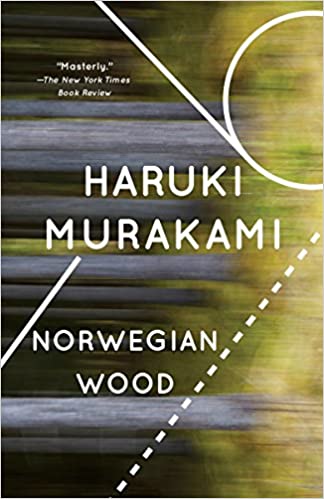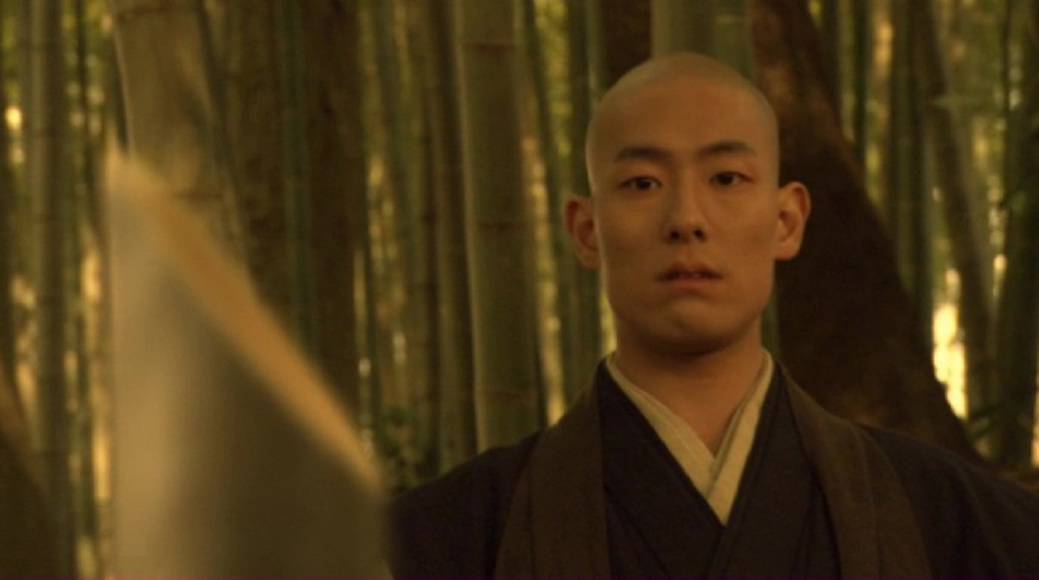When it was published in 1987, “Norwegian Wood” catapulted Japanese author, Haruki Murakami to fame, especially among Japanese youths. Due to the story having to do with the emotions of youth, the vicissitudes in adolescence as well as the quintessential coming-to-terms with society's demands, it resonated with the very same young people the book was depicting. Ironically, such a rise to fame upset Murakami and caused him to relocate to America. Since then, Murakami has seen increasing popularity with time. Many of his books have been translated to various languages and some of his works such as “Hear the Wind Sing” (1979), “Tony Takitani” (1990) and the source of this review “Norwegian Wood” (1987) have been adapted into films.
Buy This Title

The book borrows its name from a 1965 song by The Beatles, which was originally titled “Norwegian Wood (The Bird has Flown)”. It was referenced in the first scene when Toru Watanabe arrives in West Hamburg, Germany with the airplane playing an orchestral cover of the song. The song jolts Toru's memories of his time in University, particularly with a friend he once knew named Naoko. From this, the book dives right into Toru's past and traces his torn and forlorn relationship with Naoko.
While in college, Toru majors in Drama and shares a room with a student he nicknamed “Storm Trooper”. Set in Japan in the 1960s, where protests were rampant and universities often had to deal with student protestors rather than schoolwork, the novel exposes readers to a milieu of social havoc and anarchic uncertainty. This mirrors the tragic unpredictability of the students, most notably Naoko, who is, to put it in the simplest term possible, mentally unstable. Although Murakami does not explicitly say what she is suffering from, the source of her mental instability can be attributed to her melancholic nature and fragile frame. One of the most poignant moments of the book lies in Kizuki's (who was Naoko's boyfriend and Toru's close friend) suicide at the age of 17. Although the novel seemingly glosses over this event, it is nevertheless the most pivotal moment of the book. (Somehow, it reminds me of Mitsusaburo's friend suicide in Kenzaburo Oe's magnum opus “The Silent Cry” (1967).) Kizuki's suicide inevitably changes the course of both Naoko and Toru's lives – Naoko checks into a sanatorium after that while Toru becomes a restless individual. This is the first instance of the aforementioned vicissitudes in adolescence. Murakami deftly incorporates not just biological changes commonly associated with adolescence or puberty, but goes deeper into the mental transformation that accompanies it.
The social milieu evoked in the book, one reminiscent of the spirit of protest rift in the 1960s (See Oguma Eiji's research on Japanese protest in the 1960s) plays very well with the mental instability of the characters. Naoko is never fully happy or sad, as she is always portrayed as being on the periphery of emotions. Unlike fervent student protestors who are on the frontline, advocating for a better future for Japan, she is seen as rather apathetic, but all that is not inexcusable given the inner mental torment she faces. As such, there is almost a mirror of sorts that reflects whatever the characters are facing on the outside social environment. On the contrary, the protest enhances Toru's apathy and restlessness. For instance, although he often complains about his roommate's daily morning routine, he never once set down to correcting him or confronting him about his annoyance with him. Once again, unlike his fellow contemporaries, he does not act but unlike Naoko, he is not incapacitated to act but unwilling to. The reason, though is unclear and remains the primary motivation of the book – Just what exactly is Toru thinking?
Amidst lessons and tending to Naoko, Toru meets a couple of new characters, all of them with stories of their own. This includes Midori Kobayashi, a lively and spirited girl who professes a love interest in him. Midori is unlike Naoko and hence, can be treated as a literary foil to her. She takes decisive action by first approaching Toru in school and is one of the characters with whom Murakami ends the book with. At the same time, Toru also meets Reiko Ishida, a patient of the mountain asylum to which Naoko retreats, and also a person he has sex with. Like Naoko and Toru, Reiko had experienced a cataclysmic event which completely alters her life and hence, being the wise sage, she attempts to advise the couple on their relationship. Among all the characters, it is quite instinctive to feel that Murakami's inclusion of Reiko and her backstory was rather weird. The content of Reiko's history – a scandal involving her and a lesbian student – felt like Murakami just wanted to add sex after sex in the book. In my first reading of the book, I felt as though I was flipping through pages after pages of unnecessary sex scenes although I am sure the book would not be as explicit or distasteful as Sade's “120 Days of Sodom” or Japanese erotic master, Oniruku Dan's sadomasochistic tale. However, for anyone who is averse to a very blatant account of sex, this aspect of “Norwegian Wood” can come across as a turn-off. Unfortunately, Murakami is very adept at this and seems to make it a staple in his works.
Overall, the book is a classic on its own. One can entertain the thought that the book could have been written with a student audience in mind, or maybe it was to relive the times of Murakami's youth although himself denies that the book is autobiographical. After all, he studied in Waseda University, Japan's top private university which saw many student protestors at the height of the protests. Although some critics and fans alike denounced Murakami for the generic storyline, I feel that he manages to dodge this claim by imbuing in his tale timeless and everlasting notions of friendship, romance and growth. Surely, one can feel the vacant sense of hope that characterises the ‘ambience' of the book when at last, Toru takes a decisive step and declares to Midori: “All I want in this world is you.”















